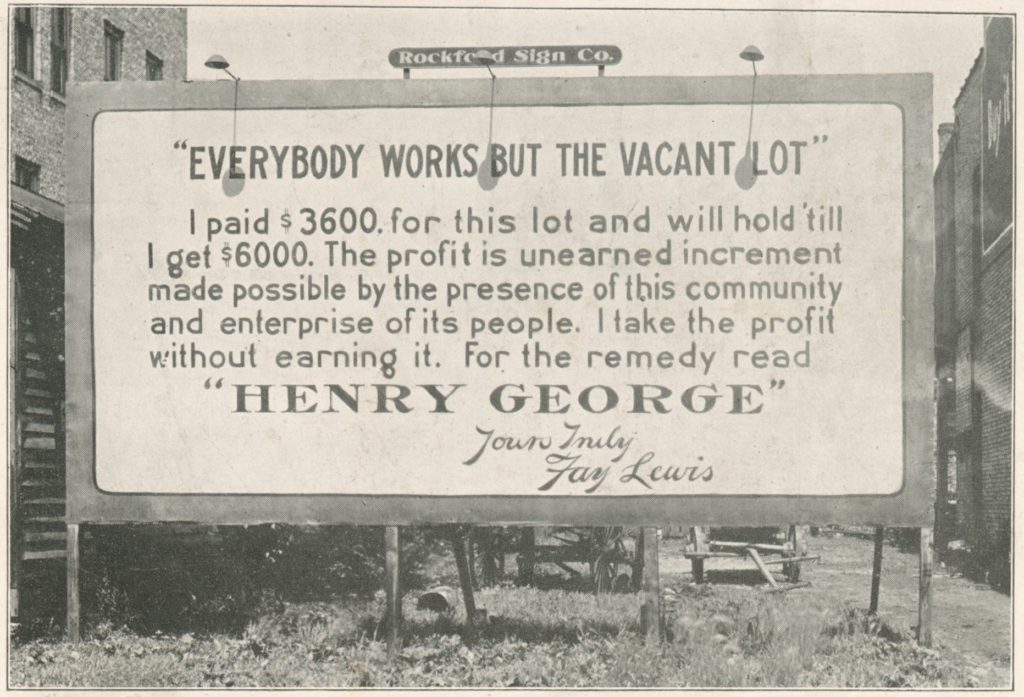LBC Eco Notes: New Refinery Pollution Standards, Scathing Report on Trash Incinerators, and Air Regulators Call Push for Zero-Emission Trucks “Tone-Deaf”
12 minute readTraversed by nearly 40 miles of freeways and flanked by a trash incinerator, several oil refineries, a natural gas-fired power plant, and two of the busiest seaports in the world, Long Beach is impacted by a wide array of pollutants, some visible and others microscopic.
In this column, I hope to share any news related to regional environmental justice and/or sustainability that I come across or am sent by the community. I will also strive to connect our readers with the land protectors, anti-racist climate change activists, students, workers, and other community folk who are doing work around environmental health and sustainability, as well as feature opportunities to take action.
GOOD NEWS
A bit of celebratory news came Nov. 5 when Refinery Rule 1109.1 (“Emissions of Oxides of Nitrogen from Petroleum Refineries and Related Operations”) was adopted into law by the Southern California Air Quality Management Dept (SCAQMD).
The regulations set new emission standards for nearly 300 pieces of refinery equipment and replaced a cap-and-trade program that had been in place since 1994 and had become ineffective at tamping down pollution due to refinery operators being able to purchase underpriced “credits” instead of installing pollution-reducing technology.
The new rule is projected to reduce emissions of nitrogen oxide by up to 8 tons a day by the end of 2023 and will affect nine refineries in the Wilmington-Carson-West Long Beach area, including the Phillips 66 refinery pictured above, as well as three small refineries (defined as those with an average crude oil input no greater than 75,000 barrels per day), and four refinery-related facilities.
While environmental justice activists saw this as a long overdue correction, the fossil fuel industry was able to squeeze out of some concessions.
“Now refineries will be mandated to install pollution controls available for decades. Although this is an important step forward, the refineries were able to win weakening provisions allowing ‘alternative’ compliance plans. It will be key to follow up during rule implementation, to ensure they don’t game the system,” wrote Communities for a Better Environment in a statement. (CBE).
LESS TALK MORE INTENTIONAL ACTION
At the Nov. 16 City Council meeting, Long Beach resident Cheyenne Phoenix (an Indigenous woman who identifies as Dine and Northern Paiute) addressed the council after being invited “at the last minute” to celebrate Native American Heritage Month by Fourth District Councilman Daryl Supernaw. She mentioned that it was “unacceptable” how late they asked her to participate in the council’s plans in yet “another example of a meaningless transactional relationship between Native peoples [and the government].”
Before speaking, Phoenix ceded some of her time to a Tongvan woman named Missy: “I am a guest here that occupies this land … this is [Missy’s] territory, this is Tongva land.”
Phoenix urged the council to acknowledge the city’s presence on Tongva land and to give space to Tonvga people year round, adding that “there needs to be a more intentional relationship with native peoples of the land and that also means cutting off oil … this is an oil city but you cannot support native peoples and continue to destruct and support the genocide of the Earth … our connection with her is not separate. The Earth is us and we are the Earth.”
POLLUTION SPIKES WITH MORE SHIPS IDLING NEAR PORT
The line of cargo ships waiting to unload the Port of Long Beach and LA now trails deeper into the Pacific Ocean and further down the coast to San Diego. Marketplace reported this month that the recent spike in pollution due to the increase in trucks needed to transport the gridlocked goods is equal to 5.8 million passenger cars. Of course all of this is also happening in an already pollution-burdened community that has for decades suffered elevated health risks and a lower life expectancy than neighbors on the east side of town. To help clean the air, activists and community members living adjacent to the 710 Freeway have been fighting for zero-emission drayage trucks and the closure of the Southeast Resource Recovery Facility (SERRF ), an “energy-to-waste” incinerator that burns most of Long Beach’s unrecycled trash (more on this in a minute).
NATURAL GAS VS ZERO-EMISSION ELECTRIC
Citing doubts about promises of near-future mass production of zero-emission trucks , as well as monetary and legislative hurdles, the SCAQMD is instead focused on using natural gas to meet an emissions goal set in the late ‘80s that comes due in 2023. While also acknowledging the need to ultimately get to using zero-emissions trucks at the twin ports of Los Angeles and Long Beach and on the region’s highways, air regulators claim they are not ready for “prime time.”
For those directly impacted, the reasons given for moving at a crawl towards zero-emission trucks is not an option in light of the deadly health implications.
“Our organizations are composed of thousands of residents that live in communities that have experienced systematic racism and exclusion from critical decisions that relate to the freight industry and the impacts on our health,” wrote a coalition of 16 different grassroots environmental groups. “The decades-long impacts brought forth by the movement of goods from fossil fuel trucks, added with the complacency from government institutions and business entities, have left generations of families suffering from a reduced quality of life that many of us have experienced first hand.”
The letter from the community groups also asserted what a study commissioned by the Dutch government from an independent group had demonstrated, that “NOx and particle pollution from [natural] gas powered trucks is often just as high as those from diesel trucks.”
Yet in response to pushing for zero-emission trucks sooner rather than later, the SCAQMD wrote it was “a tone-deaf approach that prioritizes climate goals in the future over public health today.”
Air regulators also pointed out that Governor Gavin Newsom’s executive order setting a goal of eliminating the sale of new internal combustion passenger vehicles by 2035 does not have any teeth.
“While these goals are important and laudable, they lack any legal consequence if they are not met, and do not supersede or obviate our obligation to meet legally enforceable deadlines to attain national air quality standards,” the SCAQMD wrote.
Tomisin Oluwole
Dine with Me, 2022
Acrylic on canvas
36 x 24 inches
Click here to check out our interview with Tomisin Oluwole, a literary and visual artist based in Long Beach.

Instead of gunking up our site with ads, we use this space to display and promote the work of local artists.
Taylor Thomas, co-director of East Yard Communities for Environmental Justice (EYCEJ) who was born and raised in Long Beach has seen her community suffer from related health issues her whole life. In 2013 she co-wrote and performed in a play called “The Air We Breathe ” with four other community members to show what it was like to live in Long Beach and to deal with air pollution.
Thomas herself has had asthma since she was in elementary school. She characterized SCAQMD’s response as “gaslighting,” saying in a blog post, “Investments in so-called natural gas provide a ‘bridge fuel’ to nowhere, and instead will work to continue to exacerbate the aforementioned impacts on our communities. What we need are actions that will work to eliminate toxic fossil fuel emissions altogether.”
INCENSED BY THE INCINERATOR LIE
The last couple of municipal solid waste incinerators in California need to be closed. The SERRF in Long Beach and the Covanta Stanislaus incinerator in Stanislaus County are both in areas that are predominantly people of color (which is reportedly the case for 80% of the incinerators in the nation).
In a new report titled Vestiges of Environmental Racism, the environmental law firm Earthjustice noted that “SERRF is also the only incinerator in the country located within five nonattainment areas.” According to the report, the facility creates 150,000 tons of toxic ash a year that contains heavy metals and toxic compounds, such as lead, cadmium, and dioxins.
“The presence of these toxic compounds in the incinerator ash represents a serious threat to human health and the environment since these pollutants can cause cancer, alter DNA, and harm reproductive health, neurodevelopment, and other bodily processes and organ systems,” the report reads.
This ash is blowing into areas that already have a population overburdened by pollution and high rates of disease tied to environmental hazards. The addition of toxic ash known to be harmful is nonsensical.
The SERRF facility was also supposed to pay for itself, but that has not proven to be true, according to the report. In 2018, the Long Beach City Council approved an $8.7 million subsidy to pay for repairs of the incinerator and agreed to keep it burning through the summer of 2024. Covanta, the company that maintains the incinerator, used the words “at least until 2024” in a press release to their investors at the time regarding the vote.
Environmental justice activists are pushing for the city contract to never be renewed again, pointing out that by subsidizing this outdated and dirty waste disposal method, Long Beach is squandering funds that could be better invested in transitioning to zero-emission technologies.
OPPORTUNITIES TO GET INVOLVED
Community efforts to push the California state legislature to ban incinerators, keep gross polluters accountable, as well as to push for zero emission tech right away has been upon us for quite some time. The lungs of anyone needing to breathe in California would benefit greatly by pushing for the recommendations listed below:
- Close the SERRF and Covanta Stanislaus incinerators as soon as their current contracts expire, in 2024 and 2027, respectively;
- Ban the construction or approval of any new incinerators and thermal treatment facilities (e.g., gasification and pyrolysis) in California;
- Ban the use of diversion credits—both foreign and domestic;
- Minimize the use of the incinerators and divert waste into composting; and
- Push for zero-emission trucks and port operations ASAP—overburdened communities cannot afford to wait any longer.
Sign up for East Yard Community for Environmental Justice’s newsletter to stay up to date on next steps for community action.
To help preserve the traditional tribal landscapes, prevent oil drilling in the wetlands, and otherwise protect Tongva and neighboring Acjachemen land, stay connected with Puvu (named for the sacred site of Puvungna). Friends of Puvungna is another great resource that is in need of support.
Natural Resource Defense Council (NRDC), Earthjustice, and other environmental groups are pushing for support for a new rule from Newsom calling for wider buffer zones (2,500 feet) between oil drilling and neighborhoods. Sign NRDC’s petition and Earthjustice’s petition to end drilling in California neighborhoods or text CA Oil to 21333.
Long Beach Community Table is creating gardening teams that work to normalize urban gardening, increase access to fresh produce, and feed people in need. The organization is always seeking volunteers and donations.
Sunrise Movement is active in the community in pushing for an end to our addiction to oil and stopping offshore drilling. Contact them to get on their Slack working group to get involved.
LONG BEACH CAAP
The city says it wants the public’s input for its Climate Change Action and Adaptation Plan (CAAP). This phonebook-thick plan has been in development for years and is supposed to outline how the city will meet state greenhouse gas emission standards by 2030 and achieve carbon neutrality by 2045. Find out more info here.
JUST A TIP: GREEN YOUR GIFT-GIVING
If you plan to celebrate the holidays with gifts, there are plenty of local makers whose stuff is not on one of the ships clogging up the ports. If you need some ideas, here are just a few of the local artists and artisans we have mentioned before: Gusto Bread, The Garage Theatre, Mi Corasol jewelry, but there are so many in town!
Reclaimed urban wood made into earrings, bowties, and other unique pieces by Lou Sarg is another great option. Or you could give something delicious from a local chef or baker (try hot cocoa spheres from Romeo Chocolates, vegan baked goods from Fox on the Run Baking or raw vegan cheesecake from Under the Sun, or get your Christmas catered by Chef RonDoe Woods). Wide Eyes Open Palms has handy gift boxes for coffee, wine, and homemade jam lovers.
Or give the gift that keeps giving: memories made through experiences instead of stuff. Treat someone to an empowering dance class offered by Samantha Parks or to a NYE party featuring her burlesque troupe The Black Veils. Plan a day of fitness fun that includes a 6.2 mile cruise up and down the shoreline path on bikes or roller skates (rentals available via the Pedal Movement). Supporting local businesses is better for the environment and the local economy, win-win.
Eco Notes aspires to provide a platform for environmental issues through an intersectional lens—community input encouraged, email erin@forthe.org with your tips and story ideas.


 erin@forthe.org
erin@forthe.org




